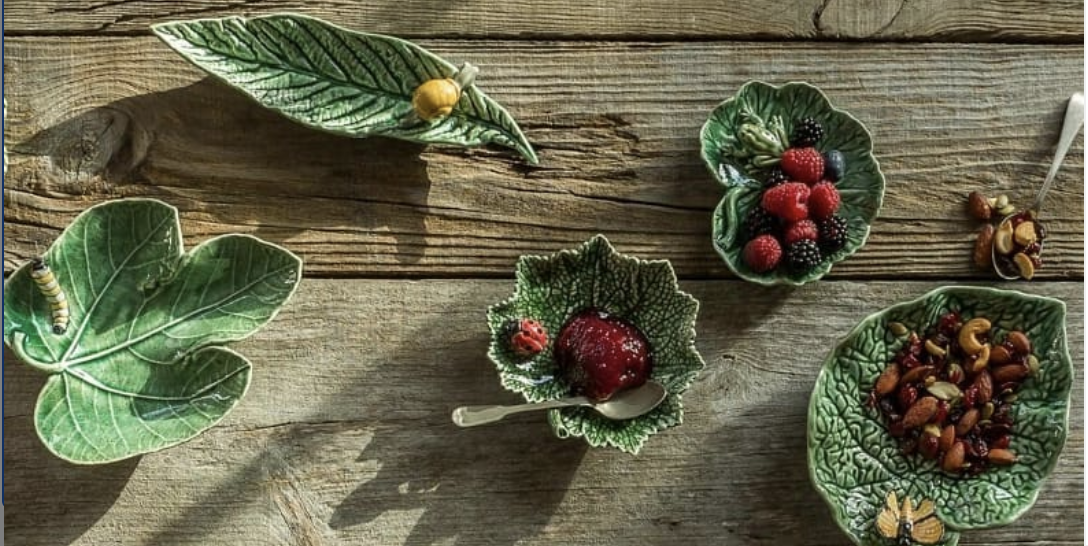How a Political Cartoonist Created One of the World's Most Famous Design Trends

Despite being the largest exporter of cork and a go-to destination for linens, Portugal remains most popular for its ceramics. While Azulejos (the vibrantly colored tiles featured in more than one Instagram backdrop) dominate the cultural conversation, it's cabbage ware that has slid its way into the design world, earning devoted collectors and spawning many cabbage imitators.
Arguably the most famous Portuguese cabbage ware hails from the flagship factory of Bordallo Pinheiro, the eponymous brand of...a notorious Portuguese political cartoonist? Indeed, that's the story behind the country's—and perhaps even the world's—most well-known purveyor of iconic green tableware. After turning caricatures like Zé Povinho (a representation of the farming poor) into ceramic statues with great success, Raphael Bordallo Pinheiro began designing his own ceramics at a faiança factory in Caldas da Rainha, a small city near Lisbon, in 1884.
Unlike traditional faiança, which features colorful patterns similar to delft-ware, Pinheiro opted to make dramatic sculptures of icons and everyday objects in the style of majolica (the over 6ft. tall "Beethoven" vase still sits in the Museu Nacional de Bela Artes in Rio). His original pottery took off amongst people tired of ornamental ceramics, especially those in the factory's home city, whom he would often grant imperfect pieces as gifts.
Meanwhile, cabbage ware and its less famous siblings (fish ware, tomato ware, and leaf ware) gained traction overseas, winning design awards in the UK and USA for their unique style. But when Portugal fell to dictatorship in the late 1920s, closing its borders and restricting trade, these exports abated, and ceramists abroad—like Dodie Thayer and Wannoppee Pottery—took to creating their own versions of the iconic vegetable pieces.
After surviving three revolutions, the Bordallo Pinheiro factory stills stands in its original Caldas da Rainha location, thanks to factory workers and locals who purchased and ran the ceramics house in the family's stead. Since being sold to Groupo Visabeira during the 2008 financial crisis, the factory still operates its ceramic school and outlet, selling the slightly imperfect pieces at a discount just outside the factory doors for cabbage ware connoisseurs eager to add to their collection.
Follow House Beautiful on Instagram.
You Might Also Like

